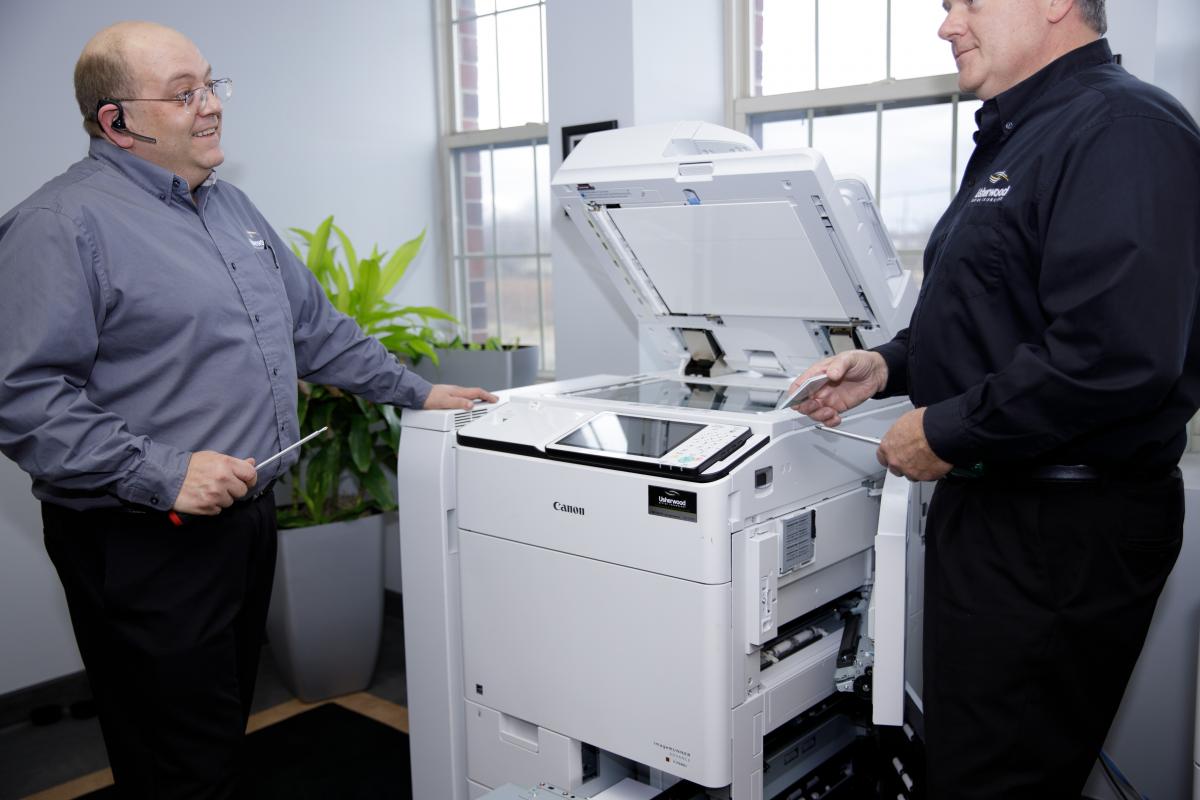By: Sarah Goltz, Content Manager on February 16th, 2021
What to Review Before Replacing Your Old Copier
When making a purchase, you always want to feel secure and confident with your buying decision.
Check out these three effortless steps to help you choose your new copier:
Step 1. Analyze your current copier
To make a regret free purchase, it is important to review the product that you currently have. Think about it, how can you make decisions for the future without evaluating the mistakes or successes of the past? I mean we can, but it usually does not end well. For this reason, become aware of the features you may have liked or disliked about your copier or service provider so that you can plan accordingly for your next purchase.
On that note, let us review what type of copier you have currently and gather the information that’s going to assist you in making a purchase that you can be confident in.
Look at two costs when reviewing your current copier cost:
- The cost of the hardware – This will either be a lease or a purchase price. Evaluating this expense gives you a good starting point in understanding what impact these investments have on your organizational budget. If you decide a lease is a better fit for your organization, it's important to decide which lease term best fits your needs. The most common lease terms are 36, 48 or 60 months.
- Service Contract Cost and Volume Coverage- Your service contract and billing invoices can provide you with more information than you can imagine. To upgrade a copier, the very first thing you should do is a thorough analysis of the volume and billing within the last 2 years. Evaluating increases or decreases in volume ensures that the contract recommended is appropriate for the status and provides a hardware solution that is fitting.
Review the functions/features of your current copier. Are all these features necessary? Are you missing any necessary functions?
Now that you have reviewed your current costs, it is time to reevaluate what copier functions you have on your current device. This can include printing, scanning, faxing, stapling, hole punching, and a host of other features.
The best place to start is by reviewing the original purchase paperwork and then talking with your key users. The goal is to determine which functions are being used by both you and other employees. Even though you may not use a specific function such as, hole punch, someone else may feel this is a critically important feature for preparing items such as board meeting packets or training manuals. Understanding which features are essential and which are not is a great way to save on costs for your next copier.
Step 2. Determine What is Necessary from your New Copier
With the knowledge you have gained from step one, you are now ready to dive into your new copier functions. The previous discussions with your key users will help guide you in looking for improvements to your current situation.
Some of the items to discuss in this process are:
Hardware functions: Copy, printing, scanning, faxing, stapling, and paper supply. These are all items that would be hardware consideration. They are functions and features you want to make sure are included in your proposal.
Workflow Solutions: These are solutions that the hardware can provide that impacts how you do your work. For example, where do your documents go after you scan them? When you have incoming faxes, how do they get distributed? With the technology advances in copier capabilities, there may be easy to implement solutions that can improve how you manage your paper.
These discussions may seem tedious at first, but the goal is to get the best value from your investment.
Step 3. How Do You Choose the Best Copier Company to Purchase From?
There are three parts to consider when choosing which company to purchase from:
- Company
- Product
- Sales Representative
Within these three considerations, look for valuable traits such as,
- Stability
- Longevity
- Reliability
- Reputation
The Company
Choose between a National or Local Provider
When determining what company to partner with there are virtually only two types of organizations available. The first is a national company that manufactures and sells their own copiers. The second is a value-added local, independent dealer that chooses the products they sell and support. There can be cultural differences between the two, so it is important that the culture of your provider resonates with your culture as well.
Make sure they are a reliable with service
You also want to ensure that they are quick to service your equipment and deal with any issues that you may have. For example, when resolving billing or servicing challenges choose the company that will provide solutions quicker and more effectively for you and your employees.
Ask these questions:
- Does the company participate in industry benchmarks and measure results?
- What future solutions and partnerships can the organization provide?
- What are the Service Benchmarks in place and what can I expect?
- When I have service, billing, or network issues- how are they resolved?
The Product:
Determine the brand you would like:
Once you have chosen a trustworthy company to work with, the next step is determining which product to purchase. Luckily for you, if you have chosen a reliable company to work with, then you have already eliminated a great deal of the stress of choosing the product. With a knowledgeable servicing company, you can now rely on them to provide you with the best product options for your specific environment and workflow. One of the best ways to evaluate all the different brands and models is to schedule a product demonstration. A product demonstration allows for the customer to see and feel the differences between products in real time.
Some of the brands that you might be considering for your copier are:
- Ricoh
- Canon
- Xerox
- Konica Minolta
- Kyocera
- Kip
- Toshiba
- HP
Manufacturers can provide detailed market share and reliability indexes. In reference to the dealer relationship with a manufacturer, it may be a good idea to work with service technicians. They know which brands are the most reliable and they can tell you if the manufacturer provides superior support to the technicians when solutions are not readily available at the dealership level.
The Sales Representative
Honesty, transparency, and responsiveness to all inquiries are strong indicators of a successful business partner.
Here are some standard personal commitments that should be expected from your Sales Rep:
On-going Customer Training – Training at the point of installation and throughout the life of the hardware.
Fleet Management – Committed to working for your customers to develop strategic planning to improve internal technology capability and reduce overall operating costs. The commitment goes beyond the current placement and includes a long-term vision for your organization.
Customer Response Commitment– All phone calls and emails are responded to within 24 hours. Any issues or concerns are promptly and cheerfully handled. The Rep’s responsibility is customer satisfaction with the company, product, and services.
Service Reviews – Personalized service review of hardware performance, service response times, parts replacement etc. available at any time throughout the life of the hardware.
Technology Upgrades – Committed to bringing the appropriate technology to the customer through personal training and understanding of industry trends.
Honesty and Transparency – The goal with every customer is to develop a business relationship that is built upon mutual respect and confidence that their word is their commitment.
Read On
.jpg?width=352&name=shutterstock_1569492577%20(1).jpg)
What ongoing services do you receive from an MSP?
After your network has been evaluated and presented with the network assessment report, you may be...
.jpg?width=352&name=Complimentary-Business-Review%20(1).jpg)
What to expect from a quarterly business review with your MSP
As a managed service provider, we provide business reviews on a quarterly basis. This means they...

4 Reasons Managed Service Providers Are So Expensive
As you research managed service providers, you may wonder why they are so expensive. You may even...



